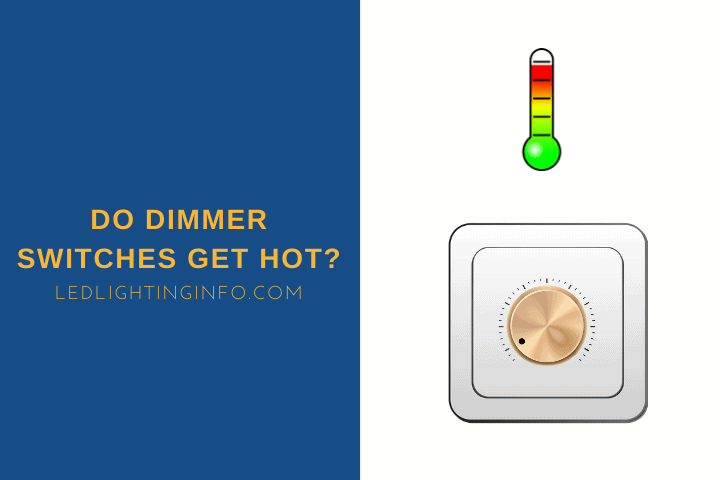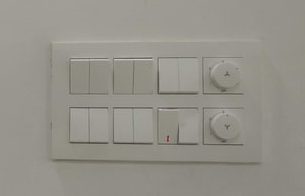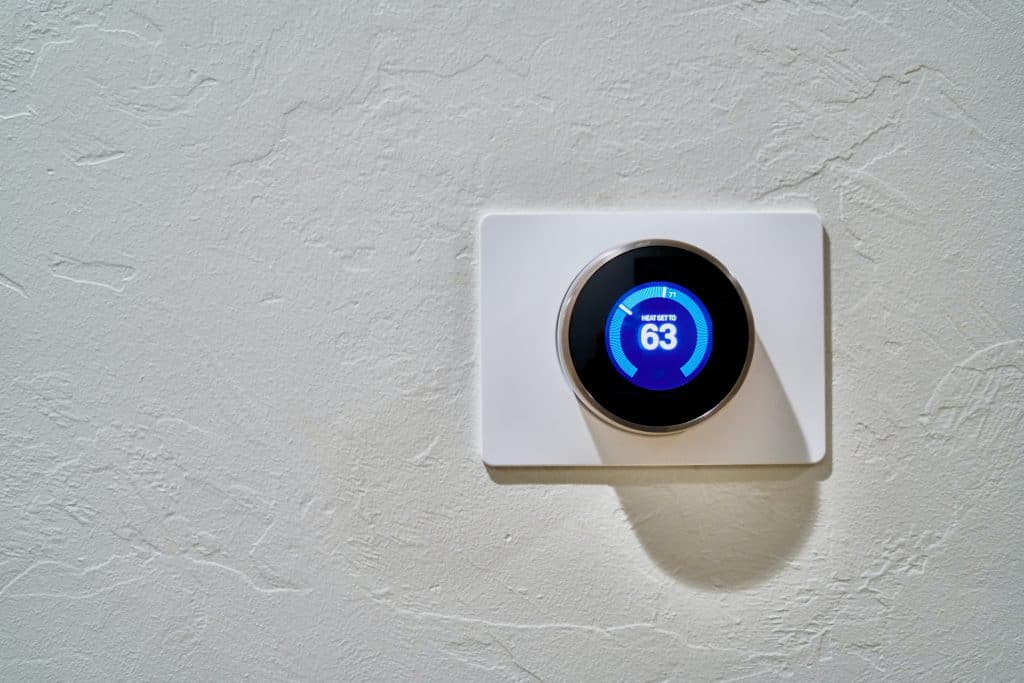Dimmer switches are perfect for that bit of extra freedom when setting one of your rooms’ mood.
Although they’re ideal for avoiding harsh lighting, whether that be too warm or too cold, there are reasons you won’t find them replacing the on/off switch any time soon.
Particularly, giving you the option to vary your lightbulbs’ intensity can result in a worrying amount of heat you can feel on the switch itself.
Dimmer switches do store heat and there is rarely cause for concern if you find the switch to be slightly warm. However, if the switch is so hot that you cannot keep your finger on it for a few seconds then there is an issue.
Why Do Dimmer Switches Get Warm?
In most modern homes, the prominence of the dimmer switch is increasing, and being able to adjust the brightness of your bulbs safely relies on one thing.
The average dimmer switch should operate at around 60°C (140°F). However, some allow for a maximum temperature closer to 90°C (195°F).
While that sounds tremendously hot, this is the component’s internal temperature – not the switch you touch.
So, why do they need to be so hot?
For the brightness of your lightbulbs to be adjusted immediately, a dimmer switch must be able to control the current going into your lights.
Modern dimmer switches do this by using a semiconductor that acts as a transistor.
This is where the build-up of heat is generated, and metal heat-sinks are used to counteract the effect.
Older dimmer switches will get warm when dimming the light, whereas modern switches become warm when brightening.
Your switch feeling hot to the touch is a result of an uneven balance in your circuit; your bulbs’ wattage is larger than the wattage rating of your dimmer switch.
To see if your lightbulb setup is exceeding the wattage, find the maximum wattage of your dimmer switch (usually a sticker on the fixture) and make sure it is higher than this calculation.
Switch Wattage > (Number of Bulbs x Bulb Wattage)
For reference, one dimmer controlling one bulb commonly has a wattage rating of 150W.
Should I Be Worried About My Dimmer Switch Getting Hot?
This is the most common reason you will find your dimmer switch being hot to the touch. The switch controls a current that is too high for its wattage rating, which results in a large amount of heat being stored.
As a side note, power surges can also have the same effect on, particularly loaded dimmers.
This can be dangerous for many reasons.
Firstly, exceeding the wattage rating of a dimmer can result in burst bulbs and the burning out of your components.
Will My Dimmer Switch Burn Out?
If the total wattage of the connected bulbs exceeds your dimmer switch’s wattage rating, you run the risk of burnout.
When a dimmer switch stops working prematurely, it will do so without warning and read zeros when measuring the multimeter connections.
If this occurs, the dimmer is beyond repair, and when you purchase a new switch, you should ensure that the wattage rating is above that of your total bulb wattage.
Alongside the risk of burning out the dimmer itself, you also risk damaging the bulbs.
Creating too much heat inside the bulb due to a low wattage rating on your dimmer switch could result in the bulbs burning out and needing to be replaced frequently.
Likewise, bulb burnout is the result of an overloaded current damaging the filament within the lightbulb globe.
However, there are many causes for light bulbs to burn out. If the switch maintains a steady temperature, it is unlikely to be the root of the problem.
Can Hot Dimmer Switches Cause Fire?
By far, the most dangerous outcome of an overloaded dimmer switch is the potential for fire.
Remember that the internal temperature can reach 90°C. The build-up of heat can quickly become a safety hazard if your switch is not equipped to manage the wattage your circuit holds.
At temperatures of over 90°C, the plastic mounting on your wall will begin to melt, which will be detrimental to your circuit’s integrity.
If you can smell burning or singed plastic, you need to address the switch immediately.
A warm dimmer switch is common for loaded circuits such as a chandelier with multiple bulbs.
When the switch itself is burning your skin after a second or two, you likely have an issue that needs to be assessed.
Here is a video that expands on that.
Why Does My Dimmer Switch Get Hot When Turned Off?
But what if you turn off your dimmer switch, and it continues to be hot to the touch?
With overloaded switches, the internal heat of the switch is exceeding a temperature anticipated by the manufacturer.
It’s possible that the metal plating used to dissipate this unanticipated heat is inadequate.
This can result in a dimmer switch remaining hot even after long periods of inactivity.
Although it may sound trivial, you should ensure that the dimmer is switched all the way off before making this assessment.
Many modern switches will provide a click sound when switched all the way off (particularly with switches only responsible for one bulb).
Without this, your switch may still be operating at its lowest brightness without ever being switched off.
As mentioned above, this can become dangerous with older switches as they generate the most heat when set to low brightness.
Another possibility is faulty wiring, which is administering power to the switch. This can be down to improper installation or only the age of the circuit.
While it is unusual for a dimmer switch to maintain a large amount of heat when turned off, the metal plate for dissipation can sometimes take time and not become a hazard.
Does Higher Wattage Rating Keep The Switch Cooler?
The wattage of your light sources also plays a part in overheating a dimmer switch.
Let me illustrate this through a simple example.
If you control a couple of light bulbs with a single dimmer switch, the switch has to deal with all the bulbs’ wattage.
This can result in excess heat being produced and overloads on the dimmer switch and should be considered a fire hazard.
However, you can take some steps to ensure that your electrical system’s wattage remains at the appropriate levels.
This can damage both the switch and its connected light sources, which will need to be replaced.
For example, if you have 12 incandescent bulbs in a chandelier and each bulb has a wattage of 60W, then the light fixture’s total wattage is 720W.
This is more than a typical dimmer switch can handle, as most are designed for 600W. The difference between the two values is significant and is likely to cause an overload.
One possible solution to this is to upgrade to a dimmer switch with a higher maximum wattage, as some switches are designed to handle around 1000-1500 watts of electricity.
Let me propose another solution which, in the long term, will benefit both your wallet as well as your dimmer.
You can replace all the incandescent bulbs with LEDs, as they are designed to consume way less energy.
Another more expensive option is to rewire your lights, which will require the services of an electrician.
This can help reduce the load on your dimmer switch by lowering the number of fixtures connected to a single switch.
If you ask me, the bulb replacement is the easiest and cheapest of all I have mentioned, but it’s up to you.
Conclusion
While a warm dimmer switch is standard for rooms with many light bulbs, a switch that is hot to the touch is an issue that should be addressed.
If touching the switch for more than two seconds becomes painful, you likely have an overloaded switch.
Doing the maths with the equation above can determine if you have an uneven circuit without the need to rip out any switches.
Have you found your dimmer switches are unusually hot? Did you find that these solutions helped you?
I would love to hear your say.



